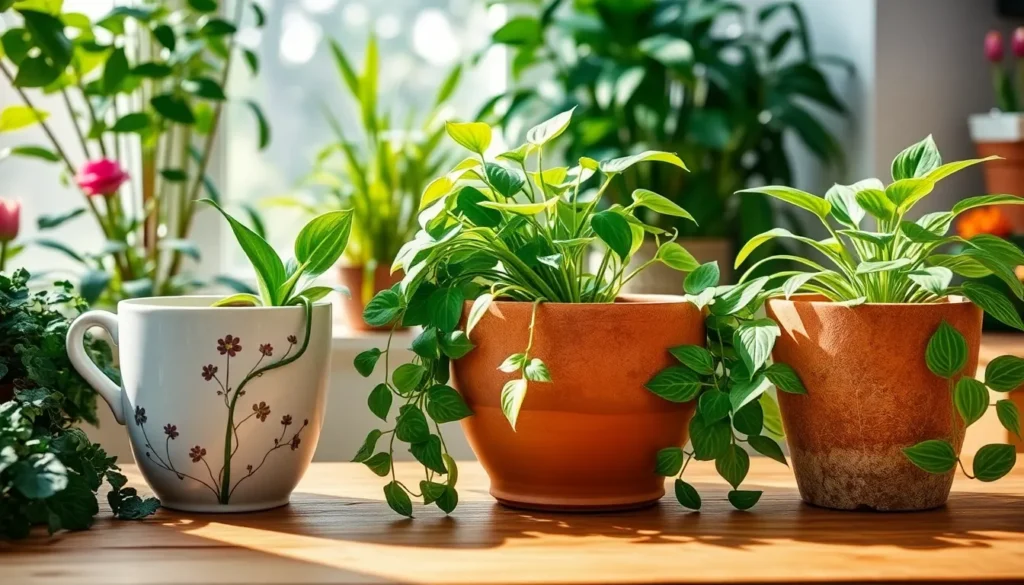Welcome to the delightful world of indoor gardening, where the right pot can make all the difference for your thriving green companions. Whether you’re just starting your journey with houseplants or you’re a seasoned plant parent looking to refine your collection, choosing the perfect pot is an art that combines functionality with aesthetics. Selecting the right pot is crucial; it’s not just about supporting your plant’s roots but also about complementing your home’s design and reflecting your personal style. A well-chosen pot can enhance your plant’s growth, prevent common issues like root rot, and bring a touch of nature’s elegance into your living space.
In this article, we’ll guide you through the essential considerations for selecting pots that cater to both the needs of your plants and your personal taste. From understanding the importance of drainage to selecting materials that suit your climate and lifestyle, you’ll gather insights that transform your indoor garden into a flourishing oasis. We’ll explore the nuances of size, shape, and material, ensuring your pots are not just containers but vital partners in your plant care routine. By the end, you’ll feel empowered to make informed choices that elevate your indoor gardening game, whether you’re nurturing a single succulent or curating a lush indoor forest.
Assess Your Plant’s Needs
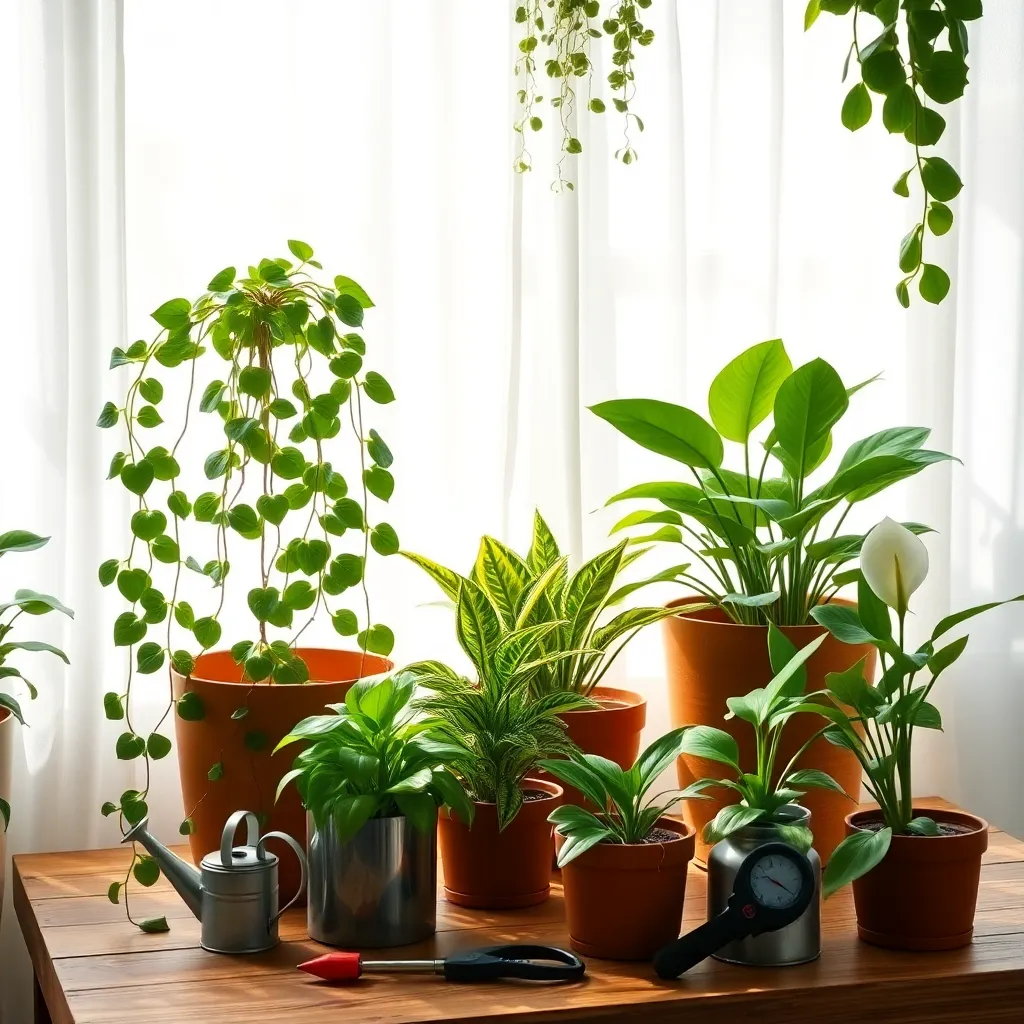
Understanding your plant’s needs is the first step in selecting the right pot. Consider the natural habitat of your plant to determine its requirements for light, water, and soil.
Different plants have varying root structures that influence the pot size required. For instance, a succulent with shallow roots will thrive in a shallow container, while a deep-rooted plant like a fiddle leaf fig needs a taller pot.
To prevent root rot, ensure your pots have adequate drainage. Look for pots with drainage holes or use a potting mix that provides excellent drainage, such as a cactus mix for succulents.
For beginners, a general potting mix can work for most houseplants, but advanced gardeners might tailor soil mixes to suit specific plant species. Mix in perlite or vermiculite to improve aeration and drainage for plants that prefer drier conditions.
Measure Available Space
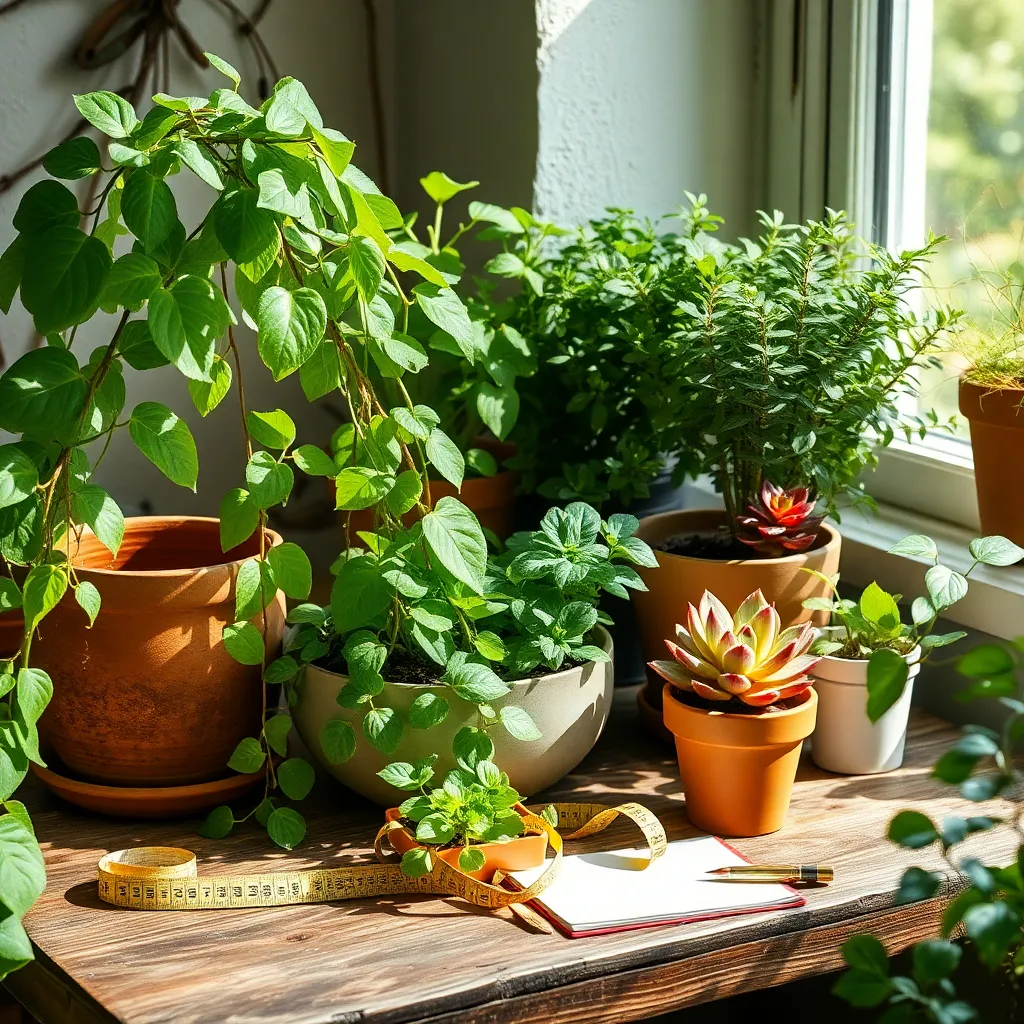
Before selecting pots for your indoor plants, it’s essential to measure the available space where they will be placed. Use a measuring tape to determine both the height and width of the area, ensuring your chosen pots fit comfortably without overcrowding.
Consider the growth potential of your plants when measuring space. A plant that spreads outward or upward may require additional room as it matures, so allow for extra space around the pot.
For beginners, remember that placing a pot too close to walls or other furniture can limit air circulation, potentially affecting plant health. Advanced gardeners might use this knowledge to strategically position plants to create microclimates or optimize light exposure.
When planning your space, think about how much light each area receives throughout the day. Plants that thrive in bright conditions should be placed where they can soak up the most natural light, while shade-loving varieties might do better in corners or lower shelves.
Select Appropriate Pot Material
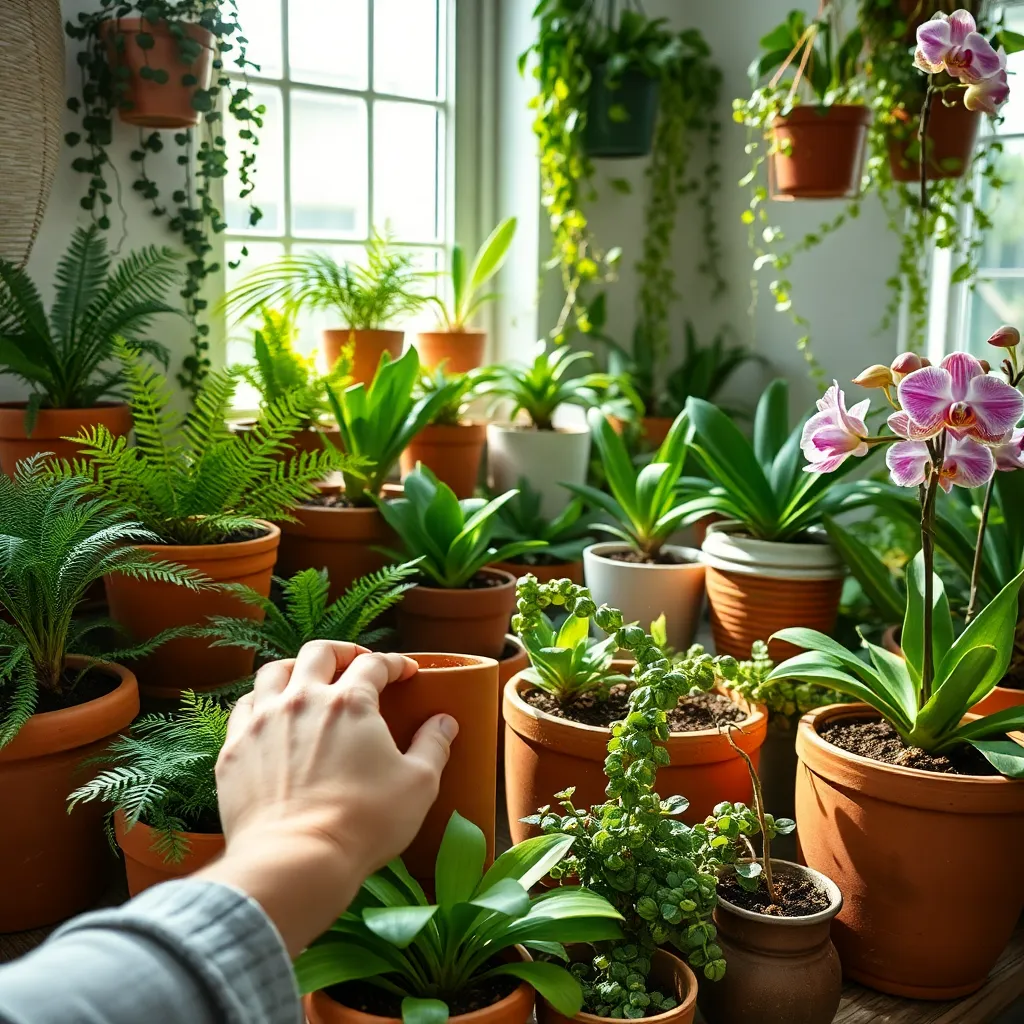
Choosing the right pot material is crucial for the health and growth of your indoor plants. Different materials offer various advantages and drawbacks, and understanding these can help you make an informed decision.
Terracotta pots are popular for their porous nature, which allows air and moisture to penetrate the walls, promoting healthy root systems. However, they can dry out quickly, so they are best suited for plants like succulents that prefer well-draining soil.
On the other hand, plastic pots are lightweight and retain moisture longer, making them ideal for plants that require more consistent watering. They are also a budget-friendly option and come in a range of colors to suit your décor.
If you’re looking for a more durable option, consider ceramic pots, which provide excellent insulation for roots. Ensure they have proper drainage holes to prevent waterlogging, especially if you are growing plants like ferns that thrive in moist conditions.
Advanced gardeners might explore self-watering pots, which can help maintain a steady moisture level, reducing the risk of over or under-watering. These pots are particularly beneficial for busy individuals or for plants that require consistent moisture, such as African violets.
Ultimately, the choice of pot material should align with the specific needs of your plants and your lifestyle. Consider factors like weight, maintenance, and how often you can water when selecting the perfect pot for your indoor garden. With the right pot, your plants can thrive and bring nature’s beauty into your home.
Ensure Proper Drainage Holes
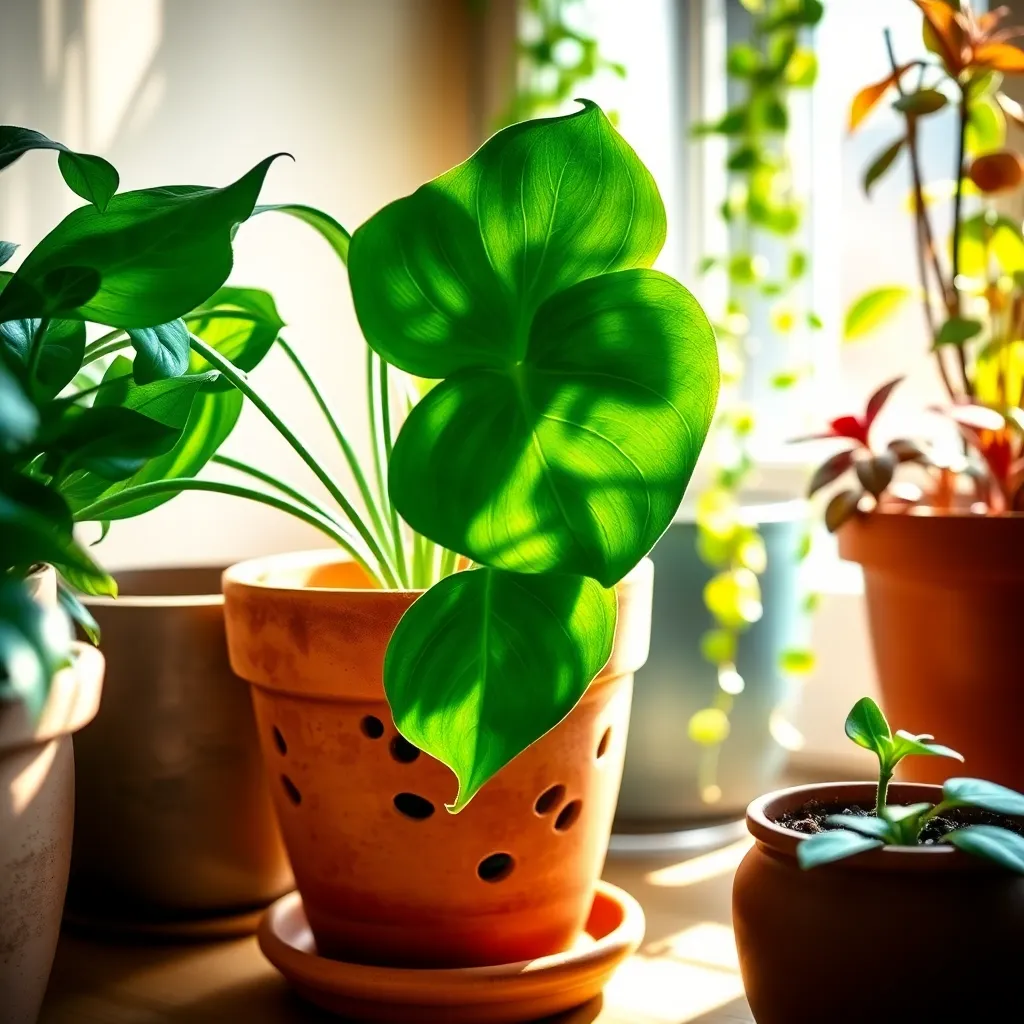
When selecting pots for your indoor plants, ensuring proper drainage is crucial to prevent waterlogged soil and root rot. Look for pots that have at least one drainage hole at the bottom, allowing excess water to escape and air to circulate.
For those using pots without built-in drainage holes, consider drilling holes yourself if the material allows it. Materials like plastic and unglazed clay are easy to work with, but be cautious with ceramic or glass to avoid cracking.
To further improve drainage, you can place a layer of small stones or coarse gravel at the bottom of the pot before adding soil. This layer will help excess water drain away from the roots, allowing the soil to dry out more evenly between waterings.
Advanced gardeners may also explore using self-watering pots, which typically include a reservoir for excess water. These pots can be particularly beneficial for plants that prefer consistent moisture, such as ferns and peace lilies, reducing the risk of overwatering.
For a simple test, water your plant and observe how quickly water drains from the bottom. If water pools for too long, it may be a sign that the drainage holes are insufficient or blocked, prompting a need to reevaluate your potting choice or technique.
Match Pot Size to Plant
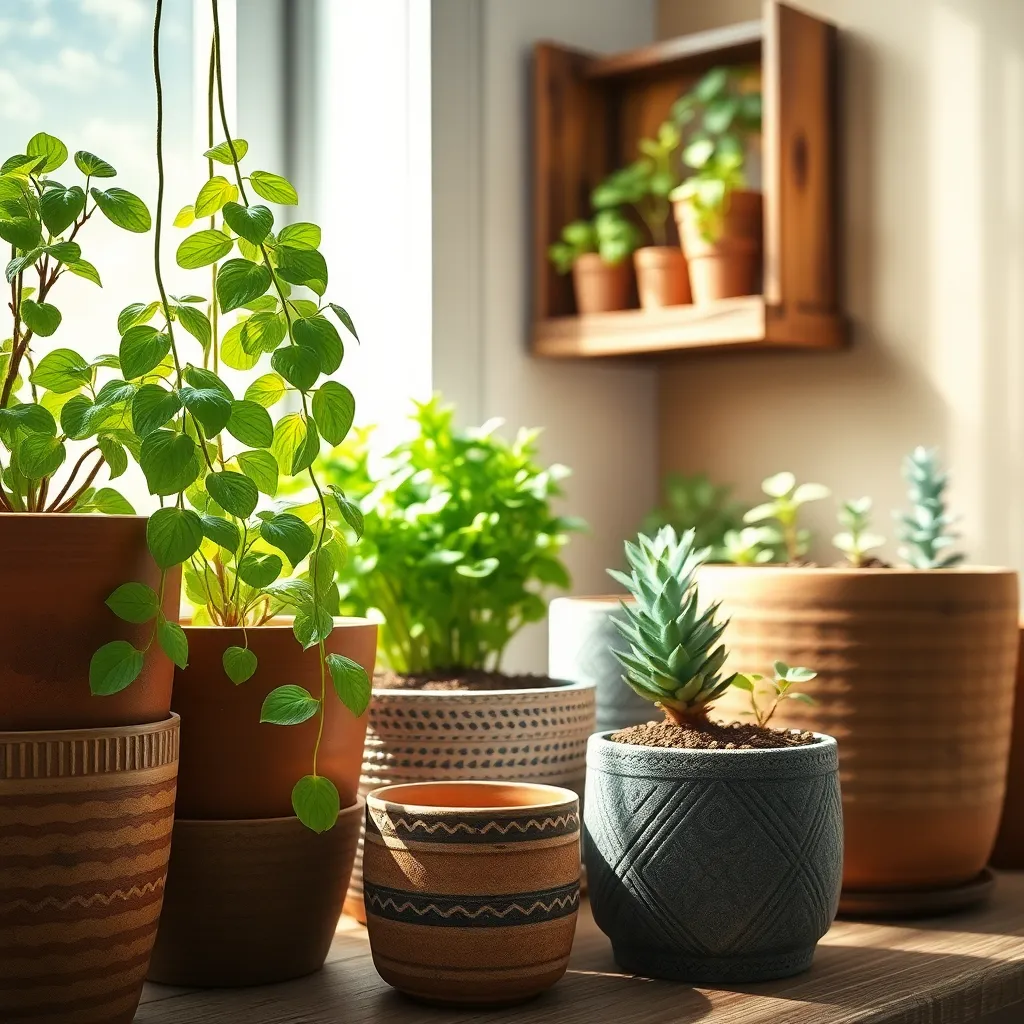
Choosing the right pot size for your plant is crucial for its health and growth. A pot that’s too small can restrict root growth, while one that’s too large may hold excess moisture, leading to root rot.
For small indoor plants like herbs and succulents, a pot that is 1 to 2 inches larger in diameter than the plant’s root ball is usually sufficient. This allows the roots to spread comfortably while preventing overwatering, which is a common issue with larger pots.
Medium-sized plants, such as pothos or spider plants, thrive in pots that are about 2 to 4 inches larger than their root ball. When repotting, ensure the new container provides enough room for growth without overwhelming the plant with too much unused soil.
Larger indoor plants, like fiddle leaf figs or rubber trees, often require pots that are at least 4 to 6 inches wider than their current root ball. For these plants, it’s essential to use a pot with a sturdy base to prevent tipping and to support their structure as they grow.
Use lightweight, well-draining soil for most indoor plants to avoid waterlogging. Regularly check the moisture level by inserting your finger about an inch into the soil; water only when it feels dry.
Conclusion: Growing Success with These Plants
As we navigate the journey of nurturing our indoor plants, it becomes evident that choosing the right pots is akin to cultivating healthy relationships. Throughout this article, we’ve explored five key concepts: the importance of space and boundaries, ensuring proper drainage for emotional health, selecting materials that suit your relationship’s unique needs, understanding the role of size and growth potential, and recognizing the aesthetic harmony that reflects shared values. By applying these principles, we not only create thriving environments for our plants but also enrich our personal connections.
Now, take a moment to evaluate the “pots” in your relationships—are they conducive to growth and well-being? Consider making one small change today, perhaps setting a new boundary or expressing appreciation, to foster a healthier dynamic.
To continue reaping the benefits of these insights, bookmark this article as a reliable guide for nurturing both your plants and relationships. As you implement these strategies, envision a future where your relationships flourish with the same vibrancy as your indoor garden. Embrace the journey, knowing that every thoughtful action brings you closer to the thriving connections you desire.

